#Charles Nodier
Explore tagged Tumblr posts
Text
There is some mortal fire in her eyes which emboldens thoughts of love.
— CHARLES NODIER ⚜️ Smarra or the Demons of the Night, SMARRA & TRILBY, transl. by Judith Landry, (2015)
44 notes
·
View notes
Text

"… Another mummy, so graceful, so slender and pretty"
Tony Johannot (1803-1852) - A Mummy so Graceful
illustration from the Charles Nodier's "Histoire du roi de Bohême et de ses sept châteaux", 1830
#tony johannot#a mummy so graceful#charles nodier#histoire du roi de bohême et de ses sept châteaux#egypt#mummy#mummification#horror#macabre#satire#story illustration#art#illustration
97 notes
·
View notes
Text
Does anyone know where a copy of Charles Nodier's play Le Vampire can be found online in English?
The reference post I was using links to a now defunct website, and the Wayback Machine did not help to retrieve it from said site.
I have access to the play in French and I can run the whole thing through Google Translate, but I'd rather not read it that way if possible.
3 notes
·
View notes
Text
I just finished reading The Vampyr by Charles Nodier, the sequel to the short story by Polidori and also “the first vampire novel.” And well… I understand why it’s Stoker’s Dracula that’s considered the most important.
It’s a read I could have easily done without…
Seriously, throughout the entire novel, I just read about men telling each other stories of women with tragic fates, wondering when the vampire would show up to do something…
And the only thing he does is die at the end…
2 notes
·
View notes
Text

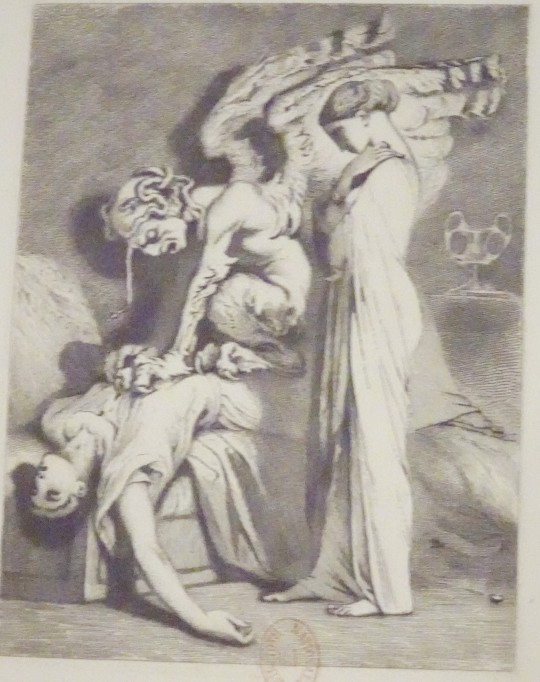
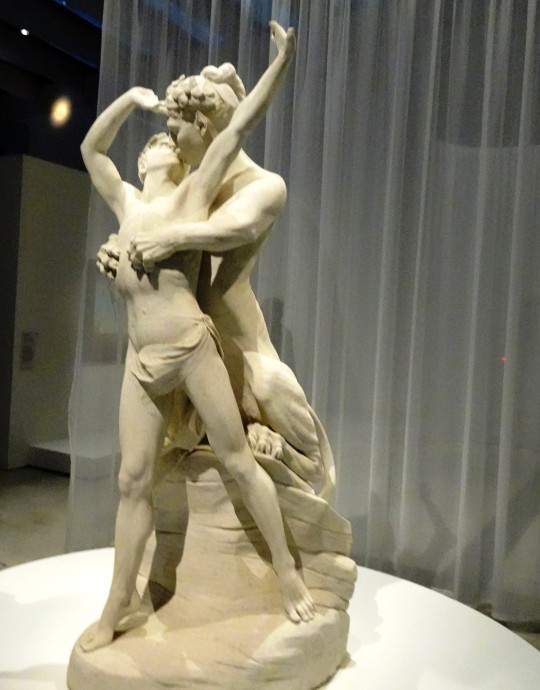
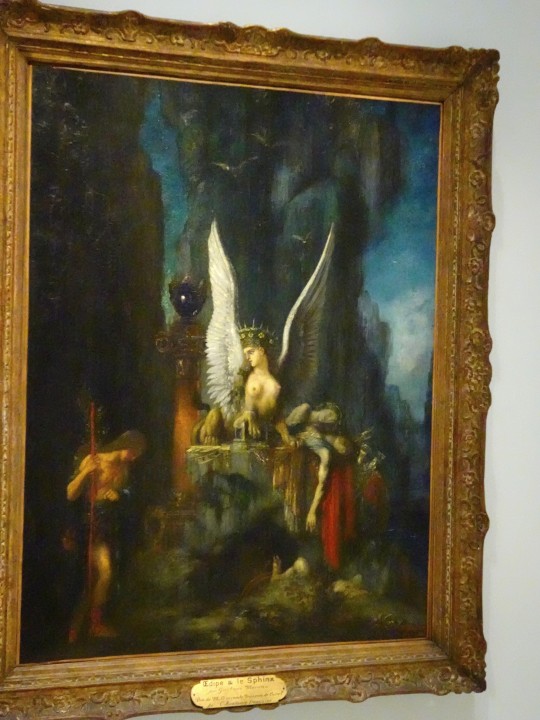
Il y a une petite quinzaine, je suis allé avec Julien et Katie, au Louvre-Lens pour une expo temporaire : “Animaux Fantastiques”. Une très belle expo ! Ici des sphinx (et des sphinges)
Gustave Moreau - "L'Egalité devant la Mort"
Tony Johannot, illustrateur pour le livre de Charles Nodier - "Smarra - ou - les Démons de la Nuit"
Ernest Christophe - "Le Baiser Suprême"
voir 1
#expo#louvre-lens#animaux fantastiques#monstre#créature#sphinx#sphinge#moreau#gustave moreau#tony johannot#charles nodier#smarra#ernest christophe#oedipe
7 notes
·
View notes
Text
Hugo's Memoirs, an intro to Shakespeare I
Young Hugo, you wild man about town:
In the evening the Duke of Northumberland gave a ball. It was a magnificent, fairylike spectacle. This Arabian Nights ambassador brought one of these nights to Rheims. Every woman found a diamond in her bouquet.
I could not dance. Nodier had not danced since he was sixteen years of age, when a great aunt went into ecstasies over his terpsichorean efforts and congratulated him in the following terms: “Tu est charmant, tu danses comme rim chou!” We did not go to Lord Northumberland’s ball.
“What shall we do tonight?” said I to Nodier. He held up his odd volume and answered:
“Let us read this.”
We read.
3 notes
·
View notes
Text
Their eyes send out a moist flame which entrances and devours.
— CHARLES NODIER ⚜️ Smarra or the Demons of the Night, SMARRA & TRILBY, transl. by Judith Landry, (2015)
47 notes
·
View notes
Text
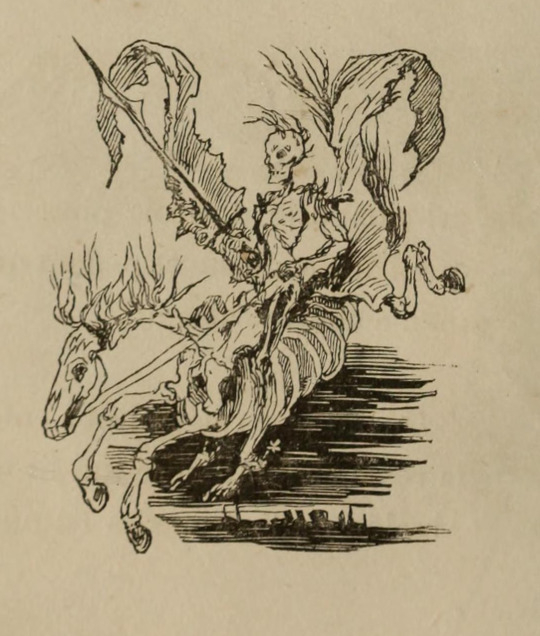
"Who the devil will tell me what a pale horse is"
Tony Johannot (1803-1852) - Pale Horse
illustration from the Charles Nodier's "Histoire du roi de Bohême et de ses sept châteaux", 1830
#tony johannot#pale horse#charles nodier#histoire du roi de bohême et de ses sept châteaux#death#death in art#satire#story illustration#art#illustration
136 notes
·
View notes
Text
« (…) mais il y a une grande question de droit politique à placer à côté de ce grand intérêt de la société, si cruellement outragée dans un ouvrage dont le titre même est devenu obscène. Ce de Sade est le prototype des victimes extra-judiciaires de la haute justice du Consulat et de l’Empire. On ne sut comment soumettre aux tribunaux, à leurs formes publiques et à leurs débats spectaculeux un délit qui offensait tellement la pudeur morale de la société tout entière qu’on pouvait à peine le caractériser sans danger, et il est vrai de dire que les matériaux de cette hideuse procédure étaient plus repoussants à explorer que le haillon sanglant et le lambeau de chair meurtrie qui décèlent un assassinat. Ce fut un corps non judiciaire, le Conseil d’État, je crois, qui prononça contre l’accusé la détention perpétuelle, et l’arbitraire ne manqua pas l’occasion de se fonder, comme on dirait aujourd’hui, sur ce précédent arbitraire… »
Charles Nodier, Souvenirs, Épisodes et Portraits de la Révolution et de l’Empire, (cited by Guillaume Apollinaire’s Introduction to L’Œuvre du Marquis de Sade)
til: Charles Nodier shared a prison cell with the marquis de Sade
28 notes
·
View notes
Text
19th Century Vampire Lit I'm Gonna Read
Because I've lost my mind.
Most of these texts were found with the aid of these two posts. I did not include any of the stories listed as "not technically about vampires," except for "Let Loose," because it concerns a specter seeking blood, and "Vampirismus," because it's called "Vampirismus."
A strikethrough indicates that I've already read the work. Bold text indicates that I cannot find an English translation, whether online or for purchase. If you know of English translations of any bolded titles, please let me know.
Thalaba the Destroyer, Robert Southey (1801)
"The Vampire," John Stagg (1810)
The Giaour, Lord Byron (1813)
"A Fragment of a Novel," Lord Byron (1816)
"The Vampyre," John William Polidori (1819)
The Black Vampyre, Uriah Derick D'Arcy (1819)
The Vampire Lord Ruthwen, Cyprien Bérard (1820)
The Vampire, or The Bride of the Isles, J.R. Planché (1820)
The Vampire, Charles Nodier (1820)
"Vampirismus," E.T.A. Hoffman (1821)
Smarra, or Demons of the Night, Charles Nodier (1821)
"Wake Not the Dead," Ernst Raupach (1823)
The Vampire, or the Hungarian Virgin, Étienne-Léon de Lamothe-Langon (1825)
Der Vampyre und seine Braut, Karl Spindler (1826)
La Guzla, ou Choix de Poesies Illyrique, Prosper Merimee (1827)
"Pepopukin in Corsica," Arthur Young (1827)
The Vampire, Heinrich Masrschner and Wilhelm August Wohlbrück (1828)
The Skeleton Count, or the Vampire Mistress, Elizabeth Caroline Grey (1828)
Der Vampyre, oder die Totenbraut, Theodor Hildebrand (1828)
"The Vampire Bride," Henry Thomas Liddell (1833)
Clarimonde, Théophile Gautier (1836)
The Family of the Vourdalak, Aleksey Tolstoy (1839)
The Vampire, Aleksey Tolstoy (1841)
"The Vampyre," James Clerk Maxwell (1845)
Varney the Vampire, or The Feast of Blood, James Macolm Rymer (1845-1847)
The Pale Lady/The Carpathian Mountains/The Vampire of the Carpathian Mountains, Alexandre Dumas (1849)
"The Vampyre," Elizabeth F. Ellet (1849)
The Phantom World [select chapters], Augustin Calmet (1850)
The Vampire, Alexandre Dumas (1851)
The Vampires of London, Angelo de Sorr (1852)
The Dead Baroness/The Vampire and the Devil's Son, Pierre Alexis Ponson du Terrail (1852)
"The Vampire," Charles Pierre Baudelaire (1857)
Knightshade/The Shadow Knight, Paul Féval (1860)
"The Mysterious Stranger," Karl von Wachsmann (1860)
"Metamorphosis of a Vampire," Charles Pierre Baudelaire (1860)
The Vampire of the Val-de-Grace, Leon Gozlan (1861)
"The Vampire; Or, Pedro Pacheco and the Bruxa," William H.G. Kingston (1863)
The Vampire/The Vampire Countess, Paul Féval (1865)
Vampire City, Paul Féval (1867)
"The Last Lords of Gardonal," William Gilbert (1867)
Vikram and the Vampire, Sir Richard Francis Burton (1871)
"The Vampire Cat of Nabéshima," Algernon Bertram Freeman-Mitford (1871)
Carmilla, Joseph Sheridan Le Fanu (1872)
"Ghosts," Mihail Eminescu (1876)
Der Vampyr – Novelle aus Bulgarien, Hans Wachenhusen (1878)
Captain Vampire, Marie Nizet (1879)
"The Fate of Madame Cabanel," Eliza Lynn Linton (1880)
After Ninety Years, Milovan Glišic (1880)
"The Vampyre," Owen Meredith (1882)
"The Vampire," Jan Naruda (1884)
"Manor," Karl Heinrich Ulrichs (1884)
"The Vampyre," Vasile Alecsandri (1886)
The Horla, Guy de Maupassant (1887)
"Ken's Mystery/The Grave of Ethelind Fionguala," Julian Hawthorne (1887)
"A Mystery of the Campagna," Anne Crawford (1887)
"Romanian Deaths and Burials-Vampires and Werewolves," Emily Gerard (1888)
"The Old Portrait," Hume Nisbet (1890)
"The Vampire Maid," Hume Nisbet (1890)
"Let Loose," Mary Cholmondeley (1890)
The Castle of the Carpathians, Jules Verne (1892)
"The Vampire," Felix Dahn (1892)
The Parasite, Sir Arthur Conan Doyle (1884)
"The True Story of a Vampire/The Sad Story of a Vampire," Count Eric Stenbock (1894)
"A Kiss of Judas," Julian Osgood Field (1894)
Lilith, George MacDonald (1894)
"The Prayer," Violet Hunt (1895)
"Good Lady Duncayne," Mary Elizabeth Braddon (1896)
"The Vampire of Croglin Grange," Augustus Hare (1896)
"Phorfor," Matthew Phipps Shiel (1896)
Dracula, Bram Stoker (1897)
"Dracula's Guest," Bram Stoker (1914*)
The Blood of the Vampire, Florence Marryat (1897)
*"Dracula's Guest" was first published in 1914 but was written either concurrent to or before the writing of Dracula.
I'm going to be honest. When I began, I thought there were four nineteenth century vampire stories. Five if you count Dracula's Guest. I've made a huge mistake.
#vampires#vampire fiction#vampire literature#19th century fiction#19th century literature#Gothic fiction
170 notes
·
View notes
Text
Ida Saint-Elme about Junot
Some of the most colourful descriptions of Junot's decline in 1813, while he was gouvernor of the Illyrian provinces, actually comes from Ney-fangirl No. 1, La Contemporaine, Ida Saint-Elme. And while there seems to be some doubt about Ida really going to Illyria during the first half of 1813, what she describes may still be very true. Her editor was one Charles Nodier, who had been called to Trieste as a librarian by Junot's predecessor Bertrand and who must have been an eye-witness to most events. But before she goes into details about her pretended sojourn in Trieste, Ida gives a short description of Junot:
Much has been said about the Duc d'Abrantès. Few soldiers have deserved to be immortalized in the bulletins through more brilliant and more numerous feats of arms.
I'm not quite sure was she is referring to here. What were Junot's major feats of arms?
But it would be unfair to see him as nothing more than a common soldier. A writing master would have envied his pen and a fencing master his fine bearing under arms. He held himself marvellously in a salon; a little upright, a little tense, showing off with some affectation his height, his legs, those natural and brilliant advantages which were disputed in the army only by Count Pajol, his rival in bravery and loyalty. He fired weapons like M. de Bondy, and recognised only Fournier and Delmas as his rivals for the pistol. He had less successful ambitions as a dancer. I think that his merit in this area has been somewhat exaggerated and I do not see that his memory has much to gain from succeeding in the Anglaise and the Montferrine.
Like Chamillard, the minister of Louis XIV, Junot played billiards in a remarkable manner. When it came to billiards in particular, he should not have been offended by any rival claims. In this genre, he had tried everything, executed everything, perfected everything. He was prouder of it than of the most brilliant memory of his military successes. For example, it was to him that we owe the instrument that cuts the billiard cue without slowing down the game, which Bouvard had just brought to him from Paris. I have seen high lords, grave diplomats, bishops and princes compliment him on it.
She then continues with the, I believe, rather infamous anecdote of Junot drinking "sulphuric ether" at dinner.
42 notes
·
View notes
Text
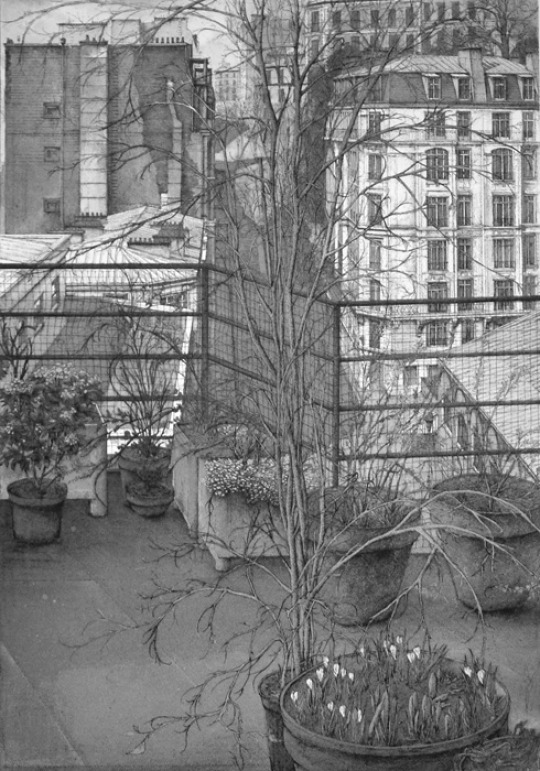
La Rue Charles Nodier - Erik Desmazières, 1990.
French , b. 1948 -
Etching, aquatint and roulette, 61.7 x 45.0 cm. Ed. 100.
55 notes
·
View notes
Photo

ab. 1830 Anonymous artist - Portrait of a man, formerly identified as Charles Nodier
(Carnavalet Museum)
126 notes
·
View notes
Photo

27 janvier 1844 : mort de l’académicien Charles Nodier ➽ http://bit.ly/Charles-Nodier Les auteurs français du XVIe siècle furent, dit-on, l’objet de ses premières prédilections, et l’on prétend qu’à huit ans il lisait Montaigne. Modeste jusqu’à l’humilité, il travaillait, dit Mérimée, au jour le jour, cédant sans cesse aux sollicitations des libraires
#CeJourLà#27Janvier#Nodier#Académie#Française#Académicien#Écrivain#Littérature#Romans#histoire#france#history#passé#past#français#french#news#événement#newsfromthepast
5 notes
·
View notes

